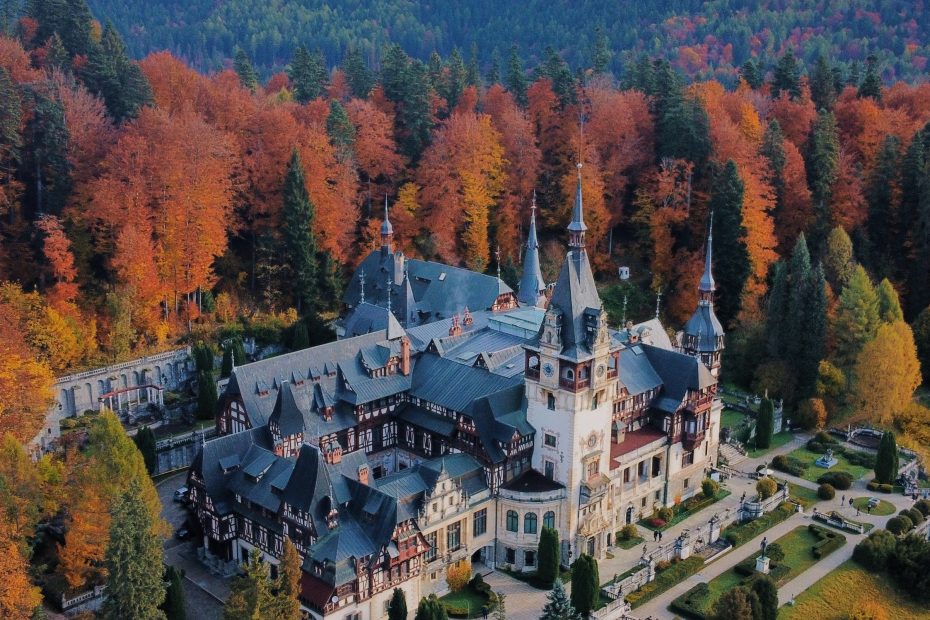Table of Contents
Introduction
Romania boasts a long, rich history spanning over 2000 years. Its strategic location between Central Europe and the Black Sea has made it an important crossroads between East and West. This tumultuous past has left Romania with a unique culture and some of the most well-preserved medieval towns in Europe. Beyond its medieval charm, Romania is also home to stunning natural landscapes like the Carpathian Mountains. But Romania is perhaps best known for spawning one of history’s most infamous figures – the brutal Vlad the Impaler – whose cruel acts inspired the legend of Dracula. From medieval citadels to forests shrouding the lairs of vampires, Romania offers travelers plenty of intriguing history and culture to discover.
Medieval Towns and Fortresses
Several Romanian cities still retain their medieval charm today. Brasov’s Old Town square is lined with pastel-colored baroque buildings and cafes. The Gothic Black Church here is the largest in Romania. Sibiu also boasts medieval architecture like its landmark Council Tower. But Sighisoara stands out as Romania’s best-preserved medieval town. Its fortified walls encircle cobbled streets and burgher houses that are UNESCO-listed. And on a remote Transylvanian hilltop looms Bran Castle, widely associated with Dracula. While Vlad the Impaler never lived here, the site still intrigues Dracula fans today. Romania’s medieval castles and walled towns offer a window into its Saxon German heritage.
Romanian Royalty
Two iconic Romanian royals left very different legacies. Vlad the Impaler ruled Wallachia intermittently from 1456-1462. His vicious tactics against invaders gave rise to his Dracula nickname, meaning “son of the dragon.” Impaling was Vlad’s preferred method of executing enemies. While his ruthless reign later spawned the Dracula legend, nationalists today still view Vlad as a hero. In contrast, Queen Marie of Romania was beloved by her people. Marie inspired Romanian pride during her 1914-1927 reign. The English-born queen promoted the arts and wore striking local folk costumes. She transformed perceptions of Romania as a backward land. Both Vlad and Marie greatly influenced Romania’s international image.
Folklore and Traditions
Romania’s rich folklore and traditions have roots in antiquity. Ancient Dacian and pagan legends melded with Christian stories to create a unique folk culture. Supernatural creatures like vampires and werewolves dominate Romanian folk tales. These dark images also spawned modern legends like Bram Stoker’s Dracula. Beyond its vampiric folklore, Romania has lively cultural traditions. Stylized dance, music, arts and dishes like sarmale reflect centuries of outside influence on Romania. Locals proudly maintain these traditions today. Experiencing Romanian folklore helps uncover the country’s complex cultural layers.
The Natural Landscapes
Snow-capped Carpathian peaks, verdant forests, and Black Sea shores create stunning scenery across Romania. The Carpathians’ breathtaking views and hiking make them a highlight. Thick woodlands like Bucegi Forest harbor bears, wolves, and more. Romania boasts some of Europe’s best-preserved virgin forests. The Danube River carves through ancient gorges on its way to the Black Sea. Taking a Danube cruise reveals beautiful vistas. From mountains to seaside, Romania’s natural diversity enthralls visitors.
Conclusion
Romania offers much for travelers to discover – well-preserved medieval towns, links to Dracula’s legend, scenic landscapes, and rich folk culture. Its position on the fringe of Europe has created a unique blend of Eastern and Western influences seen in Romanian language, arts and food. Romania’s turbulent history left complex layers for visitors to unravel. Beyond vampires and castles, experiencing Romania’s lesser-known sides offers exciting insight into this beautiful, misunderstood land.
FAQs
What are some top places to see medieval architecture in Romania?
Some of the best places are Brasov for its Gothic Black Church and cobbled Old Town, Sibiu and its atmospheric Council Tower, the perfectly preserved town of Sighisoara, and Bran Castle associated with Dracula lore.
How accurate is the link between Dracula and Vlad the Impaler?
While Vlad inspired vampire myths, he never lived at Bran Castle. The links come from Vlad’s reputation for brutality like impaling enemies, not real vampirism. Bram Stoker’s Dracula is complete fiction.
What natural landscapes does Romania offer?
Romania boasts stunning Alpine scenery in the Carpathian Mountains, well-preserved forests, the Danube River and its dramatic gorge, and Black Sea coastline.
What are some key Romanian cultural traditions?
Romania has distinctive dance and music styles that blend Balkan and Central European influences. Traditional arts like embroidery and ceramics are still practiced. And food like stuffed cabbage rolls reflects Turkish and Hungarian influences.
Why does Romanian folklore focus so much on vampires?
Romania’s old pagan legends mixed with Christian motifs over centuries, creating a culture steeped in supernatural lore and creatures like vampires and werewolves that persisted in folk tales. These dark images later inspired 19th century authors.
